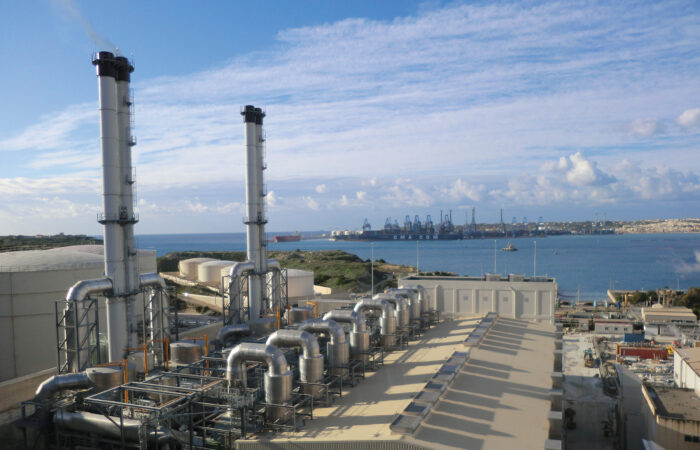Maria Demertzis*
Macroeconomic stabilisation policy for some time now has been navigating in the dark. This will only increase in the next decades as structural changes in the economy are big and their workings unknown. Macroeconomic policy frameworks will necessarily need to adapt.
The past 20 years of economic performance in the European Union have been characterised by low productivity and high volatility. Three ‘once-in-a-lifetime shocks’ – the financial crisis, the pandemic, and the energy crisis – have all brought huge volatility to the system.
But there are also other, more structural reasons, why the level of productivity has been subdued. For example, aging, excess savings, the rise of intangible capital and concentration power (primarily in the United States), along with various global geopolitical risks, have slowed productivity down. Furthermore, the climate and digital transitions imply that when it comes to the structural economy, the future will look very different from the past.
The above factors add tremendous uncertainty to the system, and this makes the design and implementation of economic policies extremely difficult. How can these uncertainties be better managed?
The climate and digital transitions will require very high and sustained levels of investment. This is, in principle, good news because investment is crucial for economic growth. The public sector will have to finance much of that.
However, different fiscal capacities at the country level mean that not all EU countries are free to undertake the investments needed. Either each member country will go at a different speed, or the EU must pull resources together to advance at a common speed, at least for those issues that are truly European public goods, like dealing with climate change.
Monetary and fiscal policy objectives
The European Central Bank will always pursue price stability as its first mandate. But it faces two significant problems. First, the rise in inflation since the pandemic is primarily supply-side driven and, therefore, cannot be addressed by monetary policy. The big unknown is when and if this supply-side inflation is entrenched and becomes demand-side – where monetary policy intervention can make a difference.
Second, financial stability, a secondary objective for the ECB, is increasingly in tension with the goal of price stability. This is true across other jurisdictions as well, but is felt most in the euro area, where increasing interest rates do not affect sovereigns’ ability to borrow the same way. This is why the ECB created a new tool known as the Transmission Protection Instrument in 2022 (TPI), with the intention of stepping in if monetary policy was ever to create a problem for a euro-area member country’s sovereign access to markets. The reality is that while the existence of such a precautionary tool is useful, the ECB will find it very difficult to use it if it ever needs to, given its self-referential nature. It remains very difficult to trigger the use of the tool without accelerating the threat to a country’s fiscal sustainability, a threat that was the reason for triggering it in the first place.
The great need for the stabilisation role of macroeconomic policy to counteract shocks and to bring the economy back to its stable growth path will continue. However, doing this under conditions of extreme uncertainty makes the task almost impossible. Global fragmentation, climate change and the role of generative AI in productivity all mean that the path itself is constantly changing.
Stabilisation policy, fiscal or monetary, is like a lever in an aircraft that brings it back to its trajectory when shocks (the wind) push it away. Operating under fundamental uncertainty would be equivalent to neither the trajectory nor the destination of the aircraft being known. How can policy use its levers to correct deviations from the trajectory when the trajectory itself is moving?
The use of data in defining macroeconomic policy
This is why designing policy based on data can only help so far. Looking at data about past developments is like looking in the rear-view mirror. This data can only go so far in helping understand what the future will bring.
The essence of macroeconomic policy now and in the future will be about managing uncertainty. Data can be relied on to learn about the past but not necessarily to design policies for the future. The main objective will be to design policies that are robust to the greatest set of contingencies. By robust, I mean policies that achieve good enough outcomes, not necessarily optimal outcomes.
It is this concept of ‘good enough’ that macroeconomic policy must learn to work with. Economic statecraft is increasingly taking over and displacing economic policy. The two may conflict each other. How does economic policy help decision-makers to at least achieve ‘good enough’ outcomes? Similarly, there may have to be a switch from talking about achieving an inflation target to talking about levels of inflation tolerance as a ‘good enough outcome’.
Macroeconomics has been very vulnerable to group thinking, which has been a real problem in modelling (on which macro policies are based), as models have failed in the past to capture very important sources of imbalances. This history is bound to be repeated unless macroeconomics puts uncertainty at its core.
*Maria Demertzis is a Senior fellow at Bruegel think tank, Brussels. The article was posted by Bruegel and on the blog of the Cyprus Economic Society.




